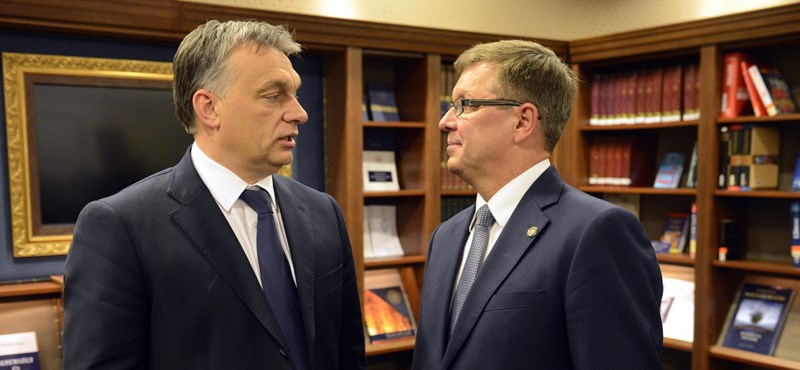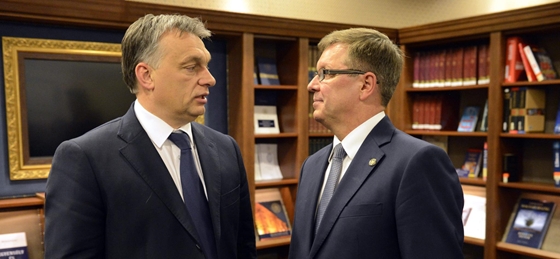[{“available”:true,”c_guid”:”0470d82f-9258-4e1d-b073-cd023aa02c8e”,”c_author”:”Papp Petra Anna”,”category”:”tudomany”,”description”:”A munkahelyünk ellen is felhasználhatják a kiberbűnözők mindazt, amit a Facebook-profilunkon találnak. A módszer sikeressége abban is rejlik, hogy szívesen osztunk meg tartalmakat a kutyánkról.”,”shortLead”:”A munkahelyünk ellen is felhasználhatják a kiberbűnözők mindazt, amit a Facebook-profilunkon találnak. A módszer…”,”id”:”20210625_kozossegi_media_hackerek_munkahely_email”,”image”:”https://img1.hvg.hu/image.aspx?id=0470d82f-9258-4e1d-b073-cd023aa02c8e&view=ffdb5e3a-e632-4abc-b367-3d9b3bb5573b”,”index”:0,”item”:”ba61497c-3aa8-4684-bde2-9f7227af574e”,”keywords”:null,”link”:”/tudomany/20210625_kozossegi_media_hackerek_munkahely_email”,”timestamp”:”2021. június. 25. 13:01″,”title”:”Mit olvas ki egy hacker a nyilvános Facebook-profilunkból? Dalolva sétálunk bele a magunknak állított csapdába”,”trackingCode”:”RELATED”,”c_isbrandchannel”:false,”c_isbrandcontent”:false,”c_isbrandstory”:false,”c_isbrandcontentorbrandstory”:false,”c_isbranded”:false,”c_ishvg360article”:false,”c_partnername”:null,”c_partnerlogo”:”00000000-0000-0000-0000-000000000000″,”c_partnertag”:null},{“available”:true,”c_guid”:”649c513f-826e-4f98-a187-f9dd8639399a”,”c_author”:”hvg.hu”,”category”:”tudomany”,”description”:”A szakemberek szerint a delta mutáció miatt még hónapokig fenn kell tartani az olyan óvintézkedéseket, mint a maszkviselés és a távolságtartás.”,”shortLead”:”A szakemberek szerint a delta mutáció miatt még hónapokig fenn kell tartani az olyan óvintézkedéseket, mint…”,”id”:”20210625_nemetorszag_delta_varians_india_mutacio_koronavirus”,”image”:”https://img1.hvg.hu/image.aspx?id=649c513f-826e-4f98-a187-f9dd8639399a&view=ffdb5e3a-e632-4abc-b367-3d9b3bb5573b”,”index”:0,”item”:”72a02203-d48d-4087-ad5d-c0e484af4941″,”keywords”:null,”link”:”/tudomany/20210625_nemetorszag_delta_varians_india_mutacio_koronavirus”,”timestamp”:”2021. június. 25. 17:49″,”title”:”Gyorsul az Indiából indult delta variáns terjedése Németországban”,”trackingCode”:”RELATED”,”c_isbrandchannel”:false,”c_isbrandcontent”:false,”c_isbrandstory”:false,”c_isbrandcontentorbrandstory”:false,”c_isbranded”:false,”c_ishvg360article”:false,”c_partnername”:null,”c_partnerlogo”:”00000000-0000-0000-0000-000000000000″,”c_partnertag”:null},{“available”:true,”c_guid”:”d5616296-0e68-42d4-a49c-8c808b20c7f4″,”c_author”:”hvg.hu”,”category”:”kkv”,”description”:”Több polgármester is ki van akadva az utcákon hagyott villanyrollerekre, több helyen az önkormányzat el is szállította azokat.”,”shortLead”:”Több polgármester is ki van akadva az utcákon hagyott villanyrollerekre, több helyen az önkormányzat el is szállította…”,”id”:”20210626_Nem_latjak_szivesen_az_elektromos_rollereket_a_Balatonon”,”image”:”https://img1.hvg.hu/image.aspx?id=d5616296-0e68-42d4-a49c-8c808b20c7f4&view=ffdb5e3a-e632-4abc-b367-3d9b3bb5573b”,”index”:0,”item”:”4e7716b1-d617-460d-9d91-89ea21423a55″,”keywords”:null,”link”:”/kkv/20210626_Nem_latjak_szivesen_az_elektromos_rollereket_a_Balatonon”,”timestamp”:”2021. június. 26. 13:00″,”title”:”Nem látják szívesen az elektromos rollereket a Balatonon”,”trackingCode”:”RELATED”,”c_isbrandchannel”:false,”c_isbrandcontent”:false,”c_isbrandstory”:false,”c_isbrandcontentorbrandstory”:false,”c_isbranded”:false,”c_ishvg360article”:false,”c_partnername”:null,”c_partnerlogo”:”00000000-0000-0000-0000-000000000000″,”c_partnertag”:null},{“available”:true,”c_guid”:”d1e615ef-66fc-403b-ad05-1dd74cbe1e92″,”c_author”:”MTI”,”category”:”cegauto”,”description”:”A 23 éves pilótának ez az idei harmadik, egyben pályafutása hatodik F1-es pole pozíciója.”,”shortLead”:”A 23 éves pilótának ez az idei harmadik, egyben pályafutása hatodik F1-es pole pozíciója.”,”id”:”20210626_Verstappen_indul_az_elrol_a_Stajer_Nagydijon”,”image”:”https://img1.hvg.hu/image.aspx?id=d1e615ef-66fc-403b-ad05-1dd74cbe1e92&view=ffdb5e3a-e632-4abc-b367-3d9b3bb5573b”,”index”:0,”item”:”de224426-1251-4546-b93f-ed74f1a1cc1b”,”keywords”:null,”link”:”/cegauto/20210626_Verstappen_indul_az_elrol_a_Stajer_Nagydijon”,”timestamp”:”2021. június. 26. 16:53″,”title”:”Verstappen indul az élről a Stájer Nagydíjon”,”trackingCode”:”RELATED”,”c_isbrandchannel”:false,”c_isbrandcontent”:false,”c_isbrandstory”:false,”c_isbrandcontentorbrandstory”:false,”c_isbranded”:false,”c_ishvg360article”:false,”c_partnername”:null,”c_partnerlogo”:”00000000-0000-0000-0000-000000000000″,”c_partnertag”:null},{“available”:true,”c_guid”:”c69b965d-9aee-40aa-9373-737a9c60b8a6″,”c_author”:”Matalin Dóra”,”category”:”360″,”description”:”Egy szabolcsi faluban élő, transznemű gyereket nevelő családról szól a Tobi színei. A homofób, úgynevezett pedofiltörvény miatt kérdéses, hogy a tanulságos történetet elmesélő dokumentumfilm kikhez juthat el. “,”shortLead”:”Egy szabolcsi faluban élő, transznemű gyereket nevelő családról szól a Tobi színei. A homofób, úgynevezett…”,”id”:”202125__tobi_szinei__dokumentumfilm__transznemuseg__szazbol_egy”,”image”:”https://img1.hvg.hu/image.aspx?id=c69b965d-9aee-40aa-9373-737a9c60b8a6&view=ffdb5e3a-e632-4abc-b367-3d9b3bb5573b”,”index”:0,”item”:”a046cc01-8c25-46ee-8e12-5a8a59250042″,”keywords”:null,”link”:”/360/202125__tobi_szinei__dokumentumfilm__transznemuseg__szazbol_egy”,”timestamp”:”2021. június. 25. 15:00″,”title”:”Százból egy család támogatja transznemű gyermekét küzdelmeiben “,”trackingCode”:”RELATED”,”c_isbrandchannel”:false,”c_isbrandcontent”:false,”c_isbrandstory”:false,”c_isbrandcontentorbrandstory”:false,”c_isbranded”:false,”c_ishvg360article”:true,”c_partnername”:null,”c_partnerlogo”:”00000000-0000-0000-0000-000000000000″,”c_partnertag”:null},{“available”:true,”c_guid”:”8fba33ef-2f67-4eeb-ab60-274a29bb5026″,”c_author”:”hvg.hu”,”category”:”elet”,”description”:”Nagy volt az öröm, lenyűgözőek lettek a képek.”,”shortLead”:”Nagy volt az öröm, lenyűgözőek lettek a képek.”,”id”:”20210625_Lo_terhesfotozas_kepek”,”image”:”https://img1.hvg.hu/image.aspx?id=8fba33ef-2f67-4eeb-ab60-274a29bb5026&view=ffdb5e3a-e632-4abc-b367-3d9b3bb5573b”,”index”:0,”item”:”d305db6b-0be3-4684-8e5d-9b3051765948″,”keywords”:null,”link”:”/elet/20210625_Lo_terhesfotozas_kepek”,”timestamp”:”2021. június. 25. 13:42″,”title”:”Ló így még nem trollkodott meg terhesfotózást”,”trackingCode”:”RELATED”,”c_isbrandchannel”:false,”c_isbrandcontent”:false,”c_isbrandstory”:false,”c_isbrandcontentorbrandstory”:false,”c_isbranded”:false,”c_ishvg360article”:false,”c_partnername”:null,”c_partnerlogo”:”00000000-0000-0000-0000-000000000000″,”c_partnertag”:null},{“available”:true,”c_guid”:”9c97bc9a-48f5-46f7-83c9-b6c652400758″,”c_author”:”hvg.hu”,”category”:”kkv”,”description”:”Hosszú idő után először újra kamatot emelt az MNB; Matolcsy György látványosan szembement a kormány gazdaságpolitikájával; hamarosan elkészülhet az Orbán család hatvanpusztai majorsága. Ez a hvg.hu heti gazdasági összefoglalója.”,”shortLead”:”Hosszú idő után először újra kamatot emelt az MNB; Matolcsy György látványosan szembement a kormány…”,”id”:”20210627_Es_akkor_Matolcsy_mnb_eu_orban”,”image”:”https://img1.hvg.hu/image.aspx?id=9c97bc9a-48f5-46f7-83c9-b6c652400758&view=ffdb5e3a-e632-4abc-b367-3d9b3bb5573b”,”index”:0,”item”:”375b67c2-3f2a-4c1f-b3e4-d925f46d8452″,”keywords”:null,”link”:”/kkv/20210627_Es_akkor_Matolcsy_mnb_eu_orban”,”timestamp”:”2021. június. 27. 07:00″,”title”:”És akkor Matolcsy Györgynek fontosabb lett a hitelesség, mint a kormányhűség”,”trackingCode”:”RELATED”,”c_isbrandchannel”:false,”c_isbrandcontent”:false,”c_isbrandstory”:false,”c_isbrandcontentorbrandstory”:false,”c_isbranded”:false,”c_ishvg360article”:false,”c_partnername”:null,”c_partnerlogo”:”00000000-0000-0000-0000-000000000000″,”c_partnertag”:null},{“available”:true,”c_guid”:”c602994a-9249-4e23-8c84-0a444b10db81″,”c_author”:”hvg.hu”,”category”:”vilag”,”description”:”A rendőrök elkapták a férfit, de egyelőre azt sem tudni, pontosan hány embert ölt meg. Az elkövető nemrég került pszichiátriára.”,”shortLead”:”A rendőrök elkapták a férfit, de egyelőre azt sem tudni, pontosan hány embert ölt meg. Az elkövető nemrég került…”,”id”:”20210625_wurzberg_keses_tamadas”,”image”:”https://img1.hvg.hu/image.aspx?id=c602994a-9249-4e23-8c84-0a444b10db81&view=ffdb5e3a-e632-4abc-b367-3d9b3bb5573b”,”index”:0,”item”:”ad7ee2e7-4ebb-4120-9fe6-8dc4f0acb3bf”,”keywords”:null,”link”:”/vilag/20210625_wurzberg_keses_tamadas”,”timestamp”:”2021. június. 25. 20:23″,”title”:”Késsel gyilkolt válogatás nélkül járókelőket egy férfi Würzburgban”,”trackingCode”:”RELATED”,”c_isbrandchannel”:false,”c_isbrandcontent”:false,”c_isbrandstory”:false,”c_isbrandcontentorbrandstory”:false,”c_isbranded”:false,”c_ishvg360article”:false,”c_partnername”:null,”c_partnerlogo”:”00000000-0000-0000-0000-000000000000″,”c_partnertag”:null}]

The number of editorial boards independent of power is steadily declining, and those that still exist are trying to stay afloat under growing headwinds. At HVG, we persevere and never give in to pressure, bringing local and international news every day.
That is why we ask you, our readers, to stand by us, support us, join and renew our membership!
We promise to keep doing our best for you in all circumstances!
Recommended from the first page
















































